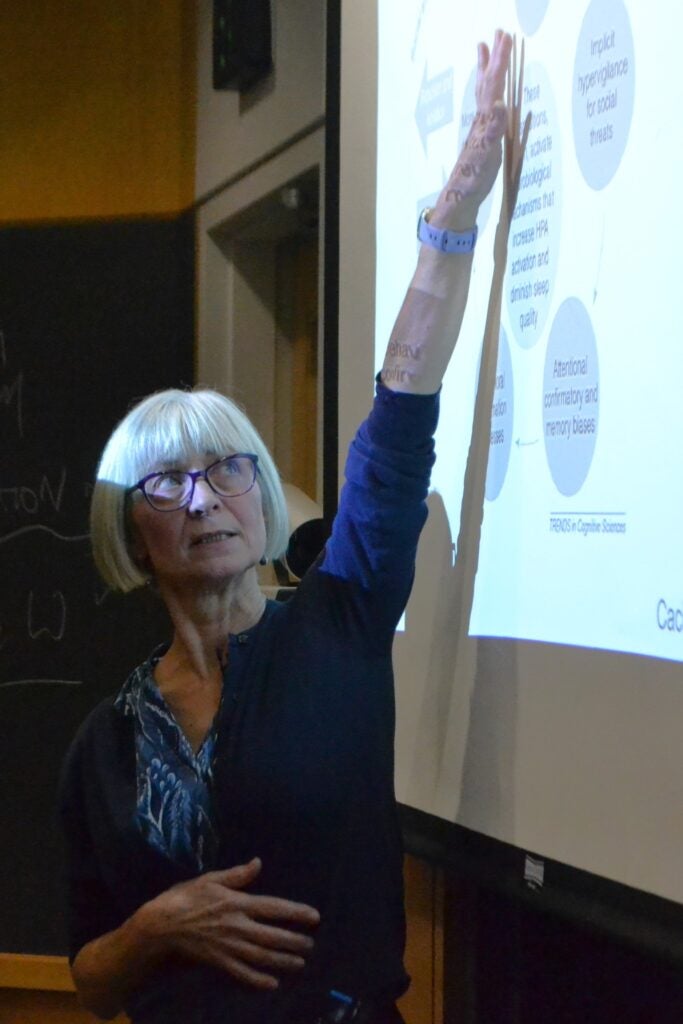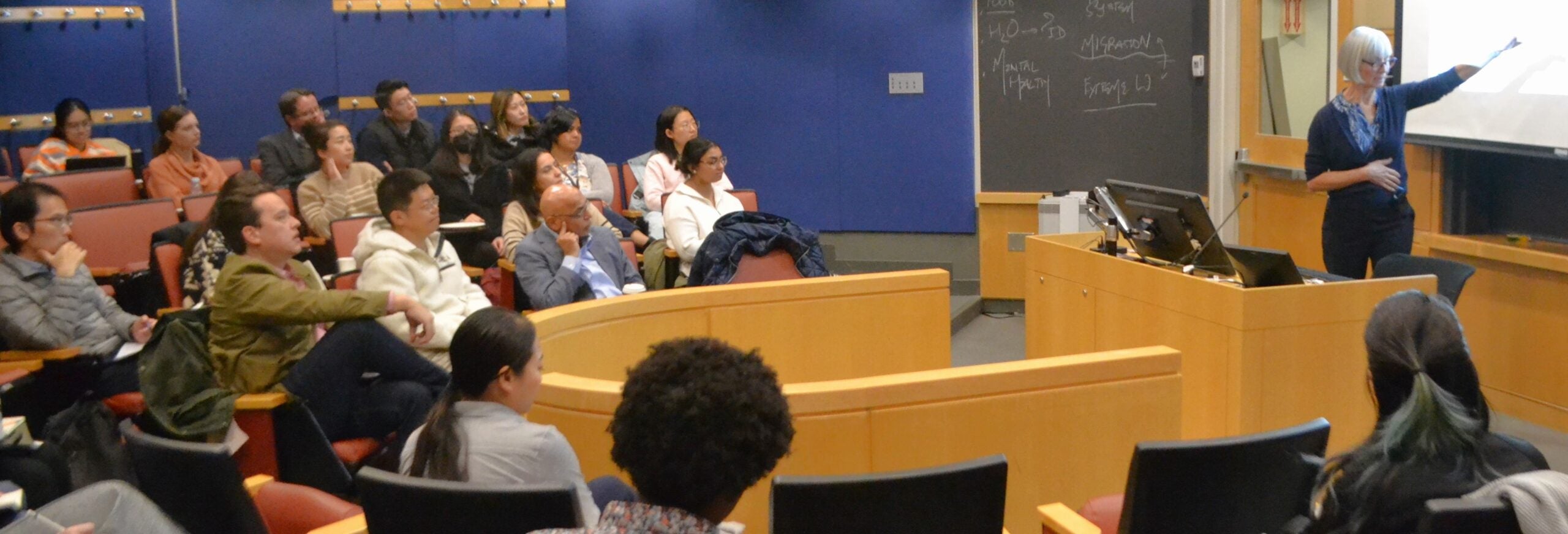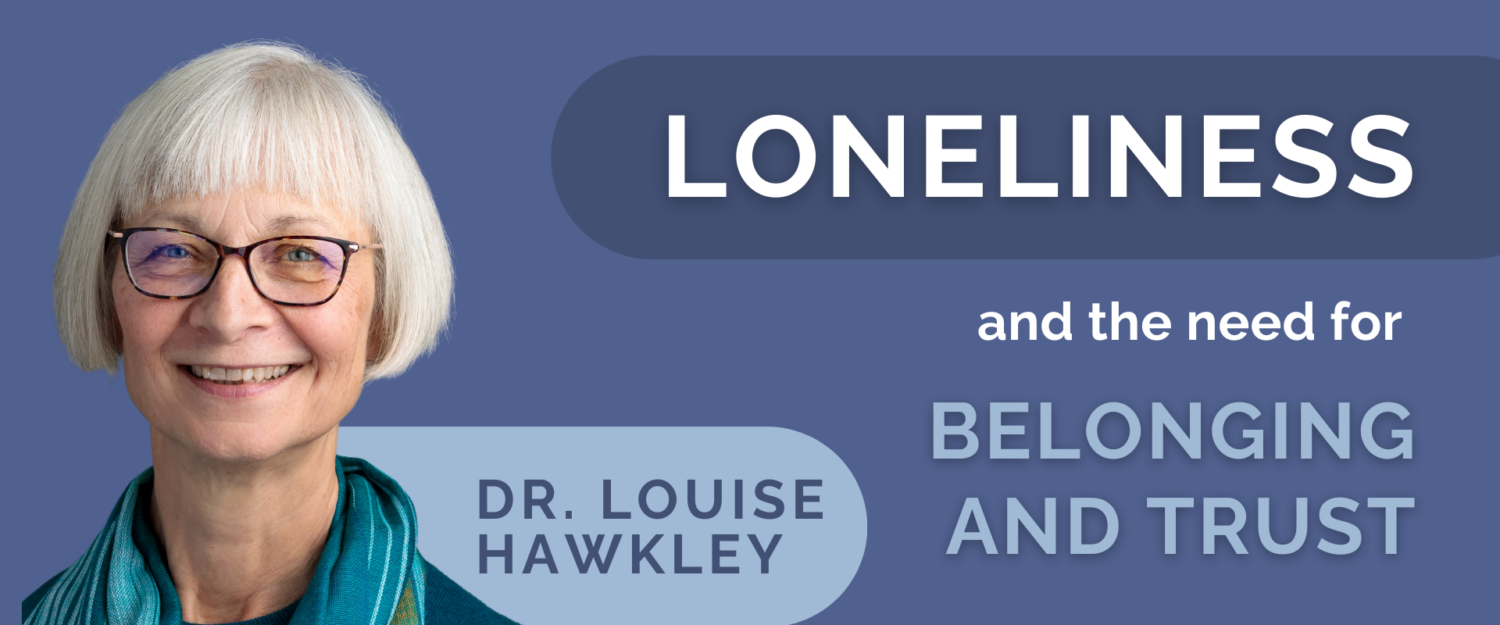The Evolution of Loneliness
There is growing public concern about loneliness, as an increasing number of Americans report feeling lonely, particularly in the wake of the Covid-19 pandemic. Loneliness is associated with negative mental and physical health ranging from depression and anxiety to heart attacks and dementia. It can be felt in our bodies, activating similar neural circuitry to physical pain.
“If loneliness is so miserable, why has it persisted in human evolution?” asked Dr. Louise Hawkley, the second speaker in the Lee Kum Sheung Center for Health and Happiness Loneliness and Well-being Seminar Series.
“Well, from an evolutionary perspective, loneliness is adaptive. It is a biological motive, like hunger and thirst, that drives us to fill our innate need to connect to and belong with others. Early in human history, loneliness would have ensured that we sought out others to increase the odds of human survival.”
Dr. Hawkley, a Principal Research Scientist at the National Opinion Research Center, was speaking to a room full of students, faculty, and staff at the Harvard T.H. Chan School of Public Health, as well as many more viewers online. Her November 1st talk was titled “Loneliness and the Need for Belonging and Trust.”

According to Dr. Hawkley, while staying with the group was important to early human survival, so too was the willingness to leave that protection and venture out into the unknown, seeking new territory or food sources. This divergence between those who stayed with the group and those went off alone explains why some people, to this day, are more sensitive than others to isolation, a phenomenon Dr. Hawkley described as “the heritability of loneliness”.
Loneliness Across the Life Span
As a co-investigator on the National Institute on Aging-funded panel study, the National Social Life, Health, and Aging Project (NSHAP), Dr. Hawkley stands as an authority on the correlation between loneliness and health in the aging process. Opening her discussion on this subject, she dispelled the common misconception that “loneliness is an older person’s problem,” emphasizing that “the data are more complicated than that.” According to her findings, loneliness doesn’t significantly increase until the age of 80 and above, and this upsurge is predominantly linked to losses associated with aging, such as the loss of a spouse, mobility, or independence.
The NSHAP, a longitudinal, population-based study of health and social factors, strives to comprehend the well-being of older, community-dwelling Americans by scrutinizing the interplay among physical health and illness, medication use, cognitive function, emotional health, sensory function, health behaviors, social connectedness, sexuality, and relationship quality.
Dr. Hawkley’s research debunks the notion that loneliness is notably higher among Baby Boomers (individuals born between 1946 and 1964) or that it has increased over the past decade. “In other words, older adults are not fated to be lonely,” she explained. “To the extent they are fortunate enough to preserve their health and maintain their spouse, their loneliness is estimated to be no higher, on average, than that of young adults.”
 Turning the focus to loneliness trends in children and young adults, Dr. Hawkley provided insights from the American Time Use Survey, revealing a significant spike in time spent alone post-2018. The survey highlighted a decline in in-person social contact between 2006 and 2017, accompanied by a simultaneous rise in internet and social media usage. Notably, loneliness also increased among high school students during this period, following a parallel trajectory to internet and social media usage.
Turning the focus to loneliness trends in children and young adults, Dr. Hawkley provided insights from the American Time Use Survey, revealing a significant spike in time spent alone post-2018. The survey highlighted a decline in in-person social contact between 2006 and 2017, accompanied by a simultaneous rise in internet and social media usage. Notably, loneliness also increased among high school students during this period, following a parallel trajectory to internet and social media usage.
Nevertheless, Dr. Hawkley added a nuanced perspective by noting that adolescents who invested more time in face-to-face interactions also allocated more time to social media. It was the adolescents who spent the least amount of time on face-to-face interactions and spent the most time using social media who reported the highest levels of loneliness.
Looking ahead, the National Social Life, Health, and Aging Project is poised to expand its research scope by incorporating GenX participants (individuals born between 1965 and 1980). This investigation will explore how the use of various online applications changes with age and relates to mental and physical health.
The Cause: Lack of Trust
What is the root cause of loneliness? Dr. Hawkley argued that loneliness is a symptom of a lack of trust. When an individual believes others to be unreliable and dishonest, they withdraw socially. This distrust goes beyond the individual to the institutional level. When citizens of a country don’t trust their government, this can in turn contribute to distrust of strangers, dehumanization of others, and social exclusion and rejection, all circumstances which perpetuate and exacerbate loneliness. She went on to state that loneliness corresponds with politically conservative thought, including greater xenophobia and endorsement of right-wing authoritarianism.
Dr. Hawkley explained that loneliness prevalence varies among countries, with low rates in Finland (6% of adults aged 60+), higher rates in the US (10-18%) and England (15-19%), and even higher rates in post-totalitarian Eastern European countries (as high as 43%). She attributed this variation to the existence and accessibility of government support systems such as welfare and healthcare services, among other factors.
A Promising Solution: Citizen Assemblies
Addressing the role of national governments in combating loneliness and fostering social connection, Dr. Hawkley turned to a quote from Terry Crouch, the UK’s first Minister for Loneliness: “Government can’t make our friends for us, and ultimately the challenge of creating a more connected society lies with each of us in our families, neighborhoods, and workplaces. But what government can do is help strengthen the foundations of society so that it becomes more natural and easy to chat, to share, and to trust each other.”
Dr. Hawkley emphasized that fostering equity, inclusion, and belonging stands as a crucial step toward cultivating a healthy and interconnected society. Citizen assemblies, she argued, exemplify an effective intervention in combating political polarization and promoting social connection. Dr. Hawkley cited the “America in One Room” experiment conducted in 2020 by the Stanford Deliberative Democracy Lab, where 523 registered voters engaged in a town hall-style discussion in Dallas, Texas. She highlighted that post-discussion, as participants got to know one another, political polarization significantly decreased, particularly among those on the more extreme ends of the political spectrum.

And this wasn’t a one-time occurrence—France held a citizen assembly on climate change, Ireland has held a number of assemblies, two of which proposed ending regulations on abortion and endorsing same-sex marriage, and Japan has held hundreds of assemblies.
Expressing her endorsement of these assemblies, Dr. Hawkley characterized them as a powerful bottom-up method for instigating change, bringing together individuals, organizations, communities, and government policymakers. In her words, “I believe citizen assemblies could go a long way to strengthening social connection and a sense of belonging, thus reducing loneliness.” She concluded with a thought-provoking question: “Where would YOU start when addressing loneliness and belonging?”
Watch the WebinarClick here to read an article by The Harvard Crimson summarizing this event.
Written by Ayla Fudala, Center Communications Coordinator


You must be logged in to post a comment.